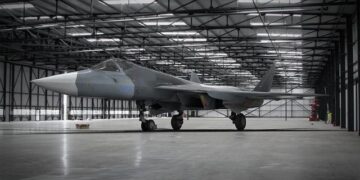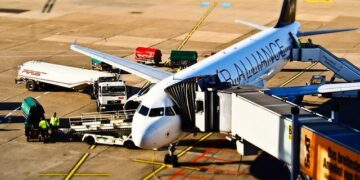A recent study conducted on offshore oil rigs has uncovered the unexpected but crucial role played by tiny hoverflies in maintaining local marine ecosystems. The research, highlighted on Phys.org, sheds new light on how these small insects contribute to biodiversity and environmental health far beyond their typical terrestrial habitats. This discovery not only challenges previous assumptions about hoverfly ecology but also underscores the importance of considering overlooked species in efforts to monitor and protect oceanic environments.
Oil Rig Ecosystem Transformed by Unexpected Hoverfly Activity
Recent observations at a North Sea oil rig have uncovered a surprising ecological shift driven by a previously overlooked insect species. Tiny hoverflies, traditionally known for their pollination roles in terrestrial environments, have established a thriving population on the rig’s artificial platforms. Their unexpected presence has initiated a cascade of ecological benefits, including:
- Pollination of scarce flowering plants nurtured on the rig for environmental offset projects
- Natural pest control by preying on aphids and other herbivorous insects
- Enhancement of local biodiversity through attracting predatory birds and other insects
This ecological interaction not only improves the rig’s microhabitat but also suggests possibilities for integrating biological control agents in offshore industrial sites. Researchers highlight that fostering such insect populations could reduce the reliance on chemical pest management without hindering operational efficiency. Below is a summary of the key ecological functions observed:
| Function | Impact | Benefit to Oil Rig |
|---|---|---|
| Pollination | Maintains plant health | Supports vegetation used for habitat restoration |
| Pest Control | Reduces harmful insect populations | Decreases chemical pesticide use |
| Biodiversity Boost | Enhances food web complexity | Promotes a sustainable offshore ecosystem |
Detailed Analysis Shows Tiny Hoverflies Crucial for Pollination and Pest Control
Recent findings from an extensive oil rig ecosystem study have shed light on the often-overlooked importance of tiny hoverflies in sustaining both pollination processes and natural pest control. Despite their small size, these insects demonstrate remarkable efficiency in transferring pollen across a wide variety of flowering plants, which is critical for maintaining biodiversity in offshore environments. Additionally, their larval stages contribute significantly to reducing pest populations by preying on aphids and other detrimental insects, thereby supporting the delicate balance of the ecosystem without the need for chemical interventions.
The study highlights several key ecological functions of hoverflies, emphasizing their dual role as both pollinators and biological control agents:
- Pollination Efficiency: Hoverflies pollinate over 70% of the local flowering species surveyed, rivaling native bee populations.
- Pest Predation: Larvae feed on aphids, thrips, and scale insects, reducing pest outbreaks by up to 40% in monitored zones.
- Ecosystem Resilience: Their presence correlates with increased plant diversity and improved crop yields in adjacent coastal areas.
| Role | Impact Level | Ecological Benefit |
|---|---|---|
| Pollinator | High | Supports plant reproduction and diversity |
| Pest Controller (Larvae) | Moderate to High | Limits pest population growth |
| Prey Base | Supportive | Feeds larger predators, sustaining food web |
Experts Urge Integration of Hoverfly Conservation in Offshore Environmental Policies
Recent research conducted on offshore oil rigs has unveiled an unexpected ecological hero: the tiny hoverfly. These insects, often overlooked in marine environments, play a critical role in sustaining local biodiversity by supporting pollination and acting as a key food source for various seabirds. Experts highlight the need to recognize their significance when shaping environmental policies around offshore drilling activities. Incorporating hoverfly conservation measures could help mitigate negative ecological impacts stemming from industrial operations.
Key recommendations from the study include:
- Implementing buffer zones around known hoverfly habitats on and near oil rigs
- Monitoring hoverfly population trends as bioindicators of ecosystem health
- Prioritizing minimization of chemical runoff that affects insect populations
- Enhancing stakeholder collaboration between ecologists and offshore industries
| Hoverfly Role | Impact Area | Conservation Action |
|---|---|---|
| Pollination | Flora health on artificial platforms | Protect native plant species |
| Prey for seabirds | Food web balance | Maintain insect-friendly habitats |
| Environmental Indicator | Pollutant sensitivity | Regular ecological assessments |
Concluding Remarks
The recent oil rig study underscores the surprising ecological significance of tiny hoverflies, shedding new light on their role in sustaining marine and coastal ecosystems. As researchers continue to explore these often-overlooked insects, their findings may prompt a reevaluation of conservation priorities and highlight the intricate connections between industrial environments and natural habitats. This discovery not only expands our understanding of biodiversity but also emphasizes the importance of protecting even the smallest contributors to ecosystem health.






























